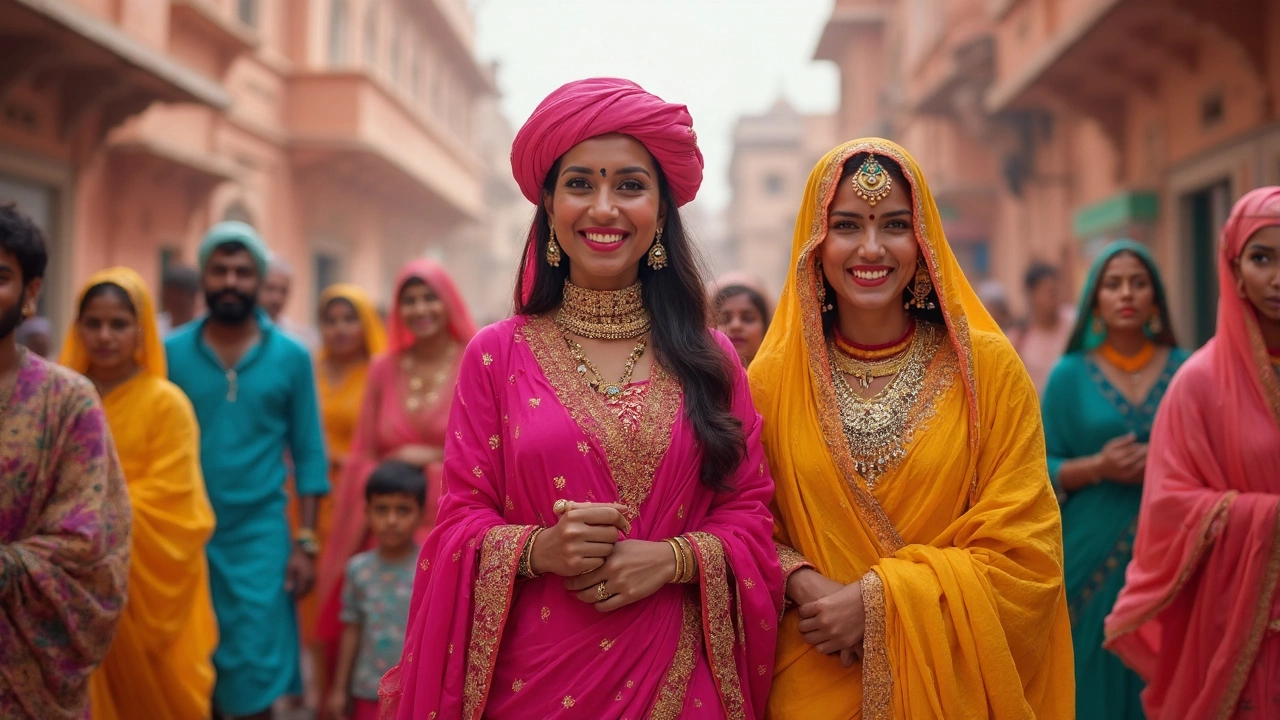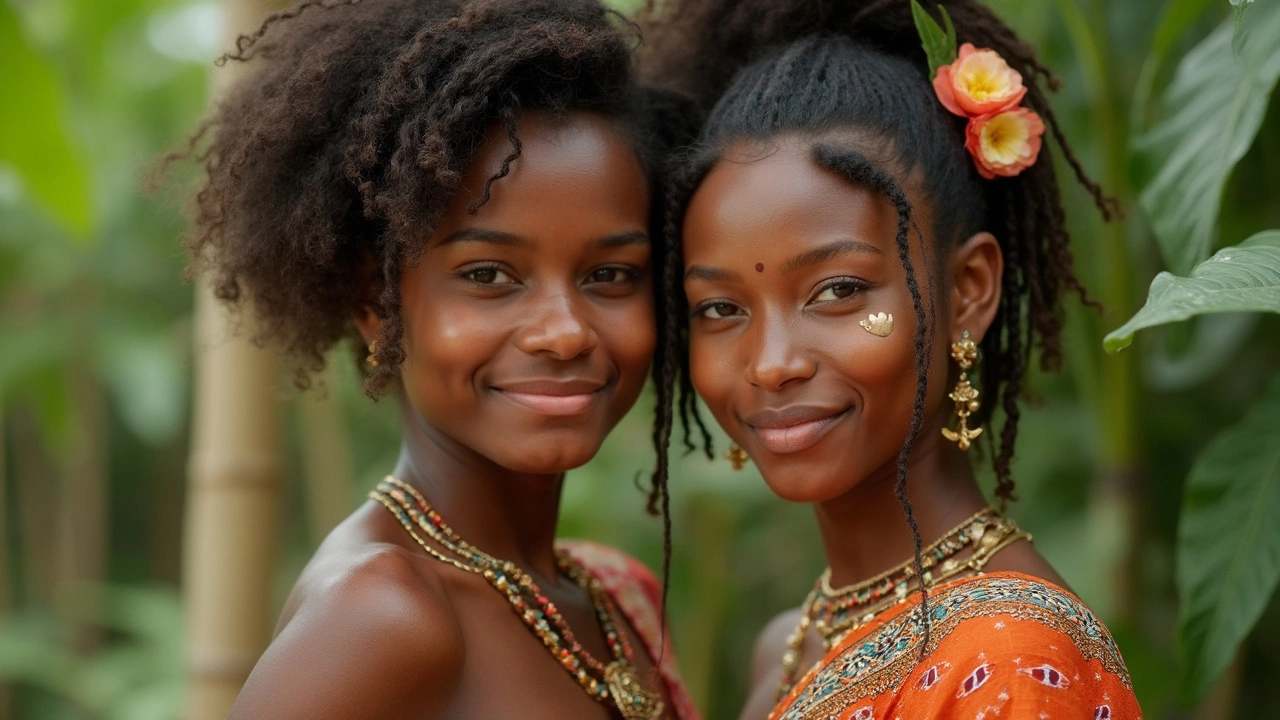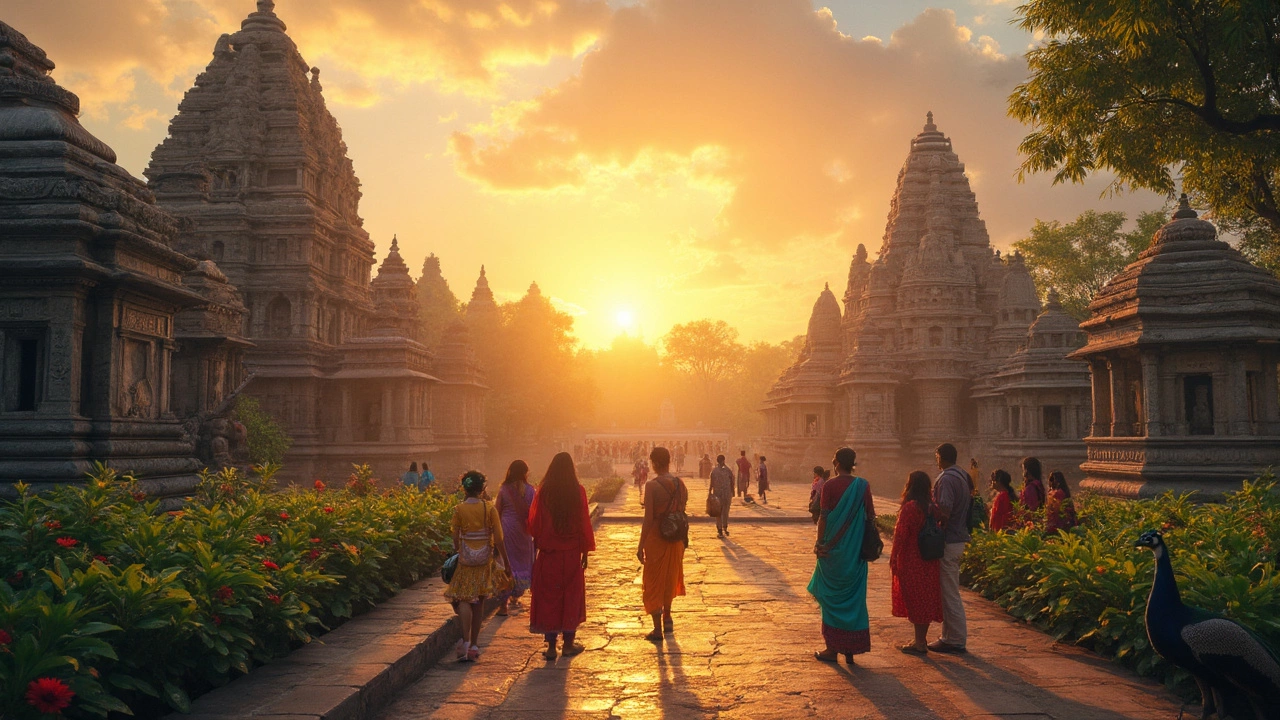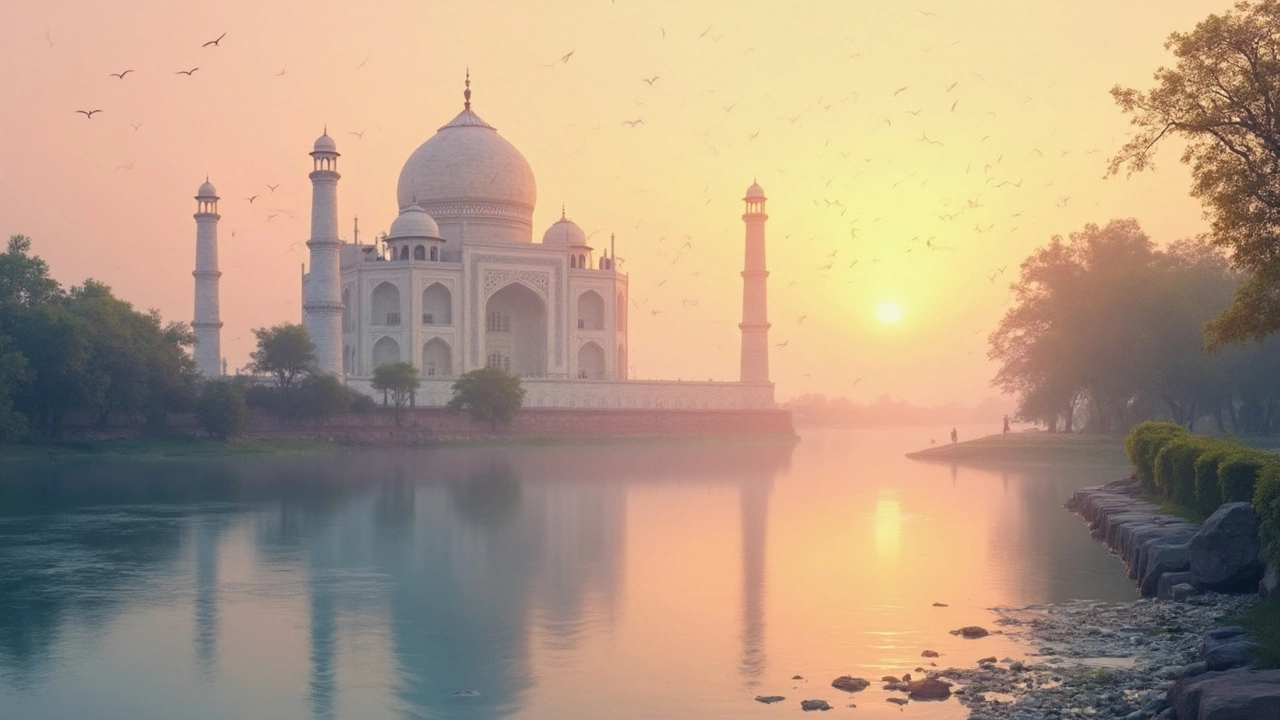Which State Has the Most Beautiful People in India? A Surprising Look at Heritage and Diversity

You’d think deciding which Indian state has the most beautiful people would be easy—just Google a few images, right? Not so fast. In India, beauty means so much more than a photogenic face. It’s a mashup of centuries of heritage, local traditions, and even how people carry themselves during colorful festivals.
From the sharp features brought by ancient traders in Rajasthan to the glowing skin in Kerala blamed on coconut oil, every state has its own special blend. Want to see what makes someone from Manipur stand out? Or why folks keep talking about the grace of Kashmiri people? You’ve got to look at both the history and what you’ll find walking through local markets, past UNESCO sites, or during a village dance.
We’ll break down how each region’s unique mix of influences—everything from Mughal palaces to South Indian temples—shapes not just the faces but also the confidence of people living there. There’s no one-size-fits-all answer, but stick around for some insider tips and cool facts if you want to see this beauty with your own eyes instead of through filters.
- The Beautiful Diversity of Indian States
- How Heritage Shapes Local Beauty
- North vs South: Unique Looks Everywhere
- Fashion, Festivals, and Everyday Life
- Standout States Known for Striking People
- Tips for Experiencing Local Beauty First-Hand
The Beautiful Diversity of Indian States
If you travel from north to south in India, you’ll feel like you’re hopping through different countries. Each state’s got its own style when it comes to looks, clothes, and even how people talk. What stands out is just how unique everyone is, and that’s not an exaggeration—India officially recognizes 28 states, and almost every one has its own language and food, so it’s no wonder beautiful people India can look so different depending on where you land.
For example, the sharp noses and fair skin you might spot in Kashmir come from centuries of Central Asian influences. Pop over to Tamil Nadu and you’ll find people with deep, expressive eyes and darker skin tones, shaped by a tropical climate and Dravidian ancestry. The northeast, like Manipur and Mizoram, is known for its Mongoloid features and strong jawlines, thanks to centuries of trade with East Asia.
It’s not all about genes though. Local traditions and lifestyles do a lot too. People in Rajasthan often sport vibrant turbans and jewelry, which actually springs from both desert life and royal styles from old palaces. In Kerala, that “dewy” look is from lots of coconut oil use, a habit that started ages ago for protection against sun and heat.
Want some numbers? Here’s a quick comparison of state-wise population diversity based on the 2011 Indian Census:
| State | Languages Spoken | Major Ancestral Influence |
|---|---|---|
| Punjab | Punjabi, Hindi | Indo-Aryan |
| Kerala | Malayalam, English | Dravidian, Arab, Jewish traders |
| Manipur | Meiteilon, Hindi | Mongoloid |
| Rajasthan | Rajasthani, Hindi | Rajput, Mughal |
This mix shapes not only how people look, but their daily lives, too. Next time you hear someone talk about the “most beautiful people” in India, remember there’s a whole backstory of culture and migration behind every face you see.
How Heritage Shapes Local Beauty
Heritage isn't just about crumbling buildings or old palaces—it's written on people's faces and visible in how they dress and act. When you think about beautiful people India, you need to zoom out and see the big picture: migration, invaders, old trade routes, even royal marriages. All of that formed the looks you see in different states today.
Take Kashmir for example. The region is famous for people with sharp noses and fair skin, thanks to centuries of mixing with Persians, Central Asians, and even Greeks—just remember, Alexander the Great marched right through there. Rajasthan’s folks show off chiseled features partly from Rajput royal bloodlines, with some genetic influences coming from the Middle East.
Down south, Kerala and Tamil Nadu have their own thing going on. Kerala’s coconut-rich diet plus humid coastal air? Many believe that’s what keeps the skin glowing. Meanwhile, tribes in the North-Eastern states like Manipur and Nagaland show clear East and Southeast Asian roots, from facial structure to bright, smooth skin.
But it’s not just about looks. Culture and heritage sites shape daily habits and style too. Women in West Bengal are known for elegant saris with red borders, worn a certain way for centuries—just look at Durga Puja. In Punjab, where color rules, the love for vibrant salwar kameez and strong personalities comes straight from the state’s folk dance and bustling bazaars.
If you pull out stats, you’d see states like Manipur and Mizoram having the highest literacy rates for women. Why does that matter? Education and confidence go hand-in-hand, and you notice it in posture and attitude—two things that matter just as much as genetics or fashion.
| State | Main Heritage Influence | Common Features |
|---|---|---|
| Kashmir | Persian, Central Asian | Fair skin, sharp features |
| Rajasthan | Rajput, Middle Eastern | High cheekbones, strong jawline |
| Kerala | Dravidian, Coastal traders | Glowing skin, dark hair |
| Manipur | East Asian | Smooth skin, round faces |
So, when you walk through a famous fort or attend an old festival, remember that the same history shaping walls and statues is doing the same to people. Beautiful people India isn’t an accident—heritage built it, face by face, style by style.
North vs South: Unique Looks Everywhere
North and South India are like two worlds living under one roof. The beautiful people India is known for look really different depending on where you go. Step into Himachal Pradesh or Jammu & Kashmir, and you’ll instantly notice sharp features, fairer skin, and those deep-colored eyes. It’s partly thanks to history—invaders and ancient traders mixed with local folks, leaving genetic footprints behind.
In the North, states like Punjab and Haryana are famous for tall, athletic builds. People say it’s all that dairy in their diet and, honestly, the love for outdoor sports. Kashmiris, on the other hand, have a mix of Central Asian and South Asian ancestry, which often shows up in striking facial features. Local legends even say Mughal emperors once searched the valleys for breathtaking beauty.
Now, head down south, and you’re in for a different vibe. In Kerala and Tamil Nadu, you’ll see darker, glowing skin (all that coconut oil helps), thick hair, and defined jaws. The Dravidian roots here go deep; plus, centuries of trade brought in Arab and Portuguese genes. People from Karnataka and Andhra Pradesh are proud of their traditional sarees, bold jewelry, and natural grace—it’s style and substance rolled into one.
Here’s a quick seat-of-the-pants comparison to make things easy:
| Region | Common Features | Influencing Factors |
|---|---|---|
| North India | Fair skin, sharp nose, tall height, colored eyes | Central Asian & Mughal ancestry, cold climate |
| South India | Glowing darker skin, thick hair, oval faces | Dravidian roots, tropical climate, foreign traders |
It’s not a contest—just proof that the Indian states pack a crazy amount of variety. The bottom line: wherever you’re traveling, keep your eyes open. Each state serves up its own version of beauty, shaped by time, weather, and the mingling of old cultures.

Fashion, Festivals, and Everyday Life
Think of beautiful people India and you probably picture bright saris, bold jewelry, or sharp sherwanis. That’s not just for holidays—it’s daily life in many places. In Rajasthan, local women wear colorful ghagras with tons of mirror work, while in Punjab, the patiala salwar and turban dominate. Tribal regions like Nagaland and Chhattisgarh add hand-woven shawls and beads to daily outfits, turning the street into a runway of tradition.
Festivals really crank things up. Take Onam in Kerala: women show off crisp kasavu saris and jasmine flower braids, while men go all white with a simple mundu that still looks classy. In West Bengal during Durga Puja, the red-bordered sari and sindoor symbolize elegance. Up north, Kashmiris wear embroidered pherans at weddings—warm and soft, these give everyone a royal vibe.
It’s not just about clothes. Everyday rituals shape physical appearance too. In Tamil Nadu, coconut oil is a part of morning routines for hair, keeping it shiny and smooth. In Rajasthan’s dry climate, women use ghee-based balms to keep skin soft. The famous Himachali diet—lots of fresh produce, dairy, and nuts—keeps folks healthy and glowing, and it actually shows.
If you’re traveling and want to blend in, here are some quick tips:
- Try local fabrics—a cotton kurta in Uttar Pradesh or linen in Bengal feels right for the weather.
- Join a festival: during Holi or Navratri, jump in with the traditional dress code. Locals love it when visitors respect the style.
- Pay attention to small grooming habits. In Kerala, a dab of sandalwood paste is normal and doubles up as natural sunscreen.
Want some numbers? During Diwali, millions in Gujarat step out in hand-embroidered chaniya cholis and kediyu jackets. Textile sales in Ahmedabad spike by 40% every festive season, showing just how key traditional fashion is, both for style and state pride.
Standout States Known for Striking People
Trying to pick the Indian states most famous for their beautiful people? It all comes down to diversity, history, and a pinch of regional pride. Here’s a breakdown of a few states regularly praised for their looks, charisma, and unique heritage.
Kashmir almost always tops the lists. You’ll hear about fair skin, almond-shaped eyes, and sharp features all tied to centuries of Central Asian influence and mountain living. There’s even a fun local joke that Kashmiris aren’t just beautiful—they’re ‘Instagrammable’ before Instagram was a thing. The mix of light eyes and graceful personality stands out everywhere from Dal Lake to bustling Srinagar markets.
Punjab is known for tall, athletic builds and lively personalities. The lush farming lifestyle and strong local cuisine (hello, ghee and dairy) show up in radiant skin and solid health. Bollywood often casts Punjabi actors and models because their looks suit the big screen’s energy. And the famous Punjabi smile? It’s hard to miss at a wedding or heritage festival.
Kerala holds its own with glowing, dusky skin and graceful features blessed by genetics and that ever-present coconut oil. Kerala’s rich culture and high literacy rate also show up in self-confidence—and it doesn’t hurt that the clothing styles, like the white and gold saree, highlight those natural features. Tourists visiting UNESCO sites like the padmanabhaswamy temple often notice how Keralites carry themselves with quiet pride.
Moving northeast, Manipur is celebrated for sharp jawlines, expressive eyes, and a certain calm elegance. Folks here come from an interesting mix of ethnic groups, which makes for fresh, stand-out features. In fact, pageant winners and athletes from Manipur regularly catch the nation’s eye, especially during sporting events.
Here’s a quick snapshot so you can compare:
| State | Known Features | Cultural Influences |
|---|---|---|
| Kashmir | Fair skin, light eyes, sharp features | Central Asian, Persian |
| Punjab | Tall, athletic, strong jawlines | Sikh, Mughal, local farming |
| Kerala | Dusky skin, expressive eyes, wavy hair | Dravidian, trade links |
| Manipur | Defined cheekbones, slender build | Tibeto-Burmese, Northeast tribal |
If you’re planning a trip to see these faces up close, heritage festivals and markets are great. That’s where you really get a sense of what makes the people stand out—beyond what you’ll see in movies or magazines.
Tips for Experiencing Local Beauty First-Hand
There’s nothing like stepping straight into India’s crowded streets, ancient towns, and colorful festivals to really see what makes the beautiful people India so memorable. But just snapping a few selfies at a heritage fort isn’t going to show you the full picture. Here’s how you actually spot and understand the unique looks and charm in every corner of the country.
- Visit local festivals: Whether it’s the Hornbill Festival in Nagaland or Onam in Kerala, these are great spots to see traditional clothing, dance, jewelry, and beauty rituals up close. You’ll see how each state’s style is rooted in daily life and long-held traditions.
- Explore heritage sites during off-peak times: Avoid the huge crowds at classics like the Taj Mahal or Hampi. Show up early in the morning or on quieter weekdays to see local guides, caretakers, and families. It’s a more genuine way to notice how people look and interact without the tourist buzz.
- Book a homestay: Ditch big hotels for a family-run homestay in places like Rajasthan, Sikkim, or Tamil Nadu. Chatting at breakfast or joining in for local chores puts you right in the center of real everyday life, where unique features and personal style shine.
- Take a market walk: Local bazaars in cities like Jaipur, Imphal, or Kochi aren’t just about shopping. You’ll see faces of every age, street vendors with their confident smiles, and families flaunting their Sunday best. Take your time and observe the variety right in front of you.
- Pick states known for their diversity: If you want to see how Indian states differ, check out Mizoram (famous for bright skin and sharp jawlines), Punjab (tall, athletic builds), and Manipur (graceful features and sporty confidence). Every state highlights its own version of beauty, shaped by its history and geography.
Did you know the northeast states like Meghalaya and Mizoram rank high on beauty pageant wins compared to population size? That’s not just luck—these regions have a long tradition of celebrating fashion, music, and style in schools and local clubs year-round.
| State | Famous Beauty Traits | Best Festival or Experience |
|---|---|---|
| Punjab | Tall, sharp features, colorful outfits | Lohri Festival |
| Mizoram | Fair skin, expressive eyes | Chapchar Kut Festival |
| Kerala | Glowing skin, traditional attire | Onam |
| Kashmir | Hazel eyes, fair skin | Tulip Garden Festival |
| Rajasthan | Distinctive jewelry, sharp features | Pushkar Camel Fair |
If you’re curious about heritage sites and people in one go, don’t skip places like Fatehpur Sikri, Madurai’s Meenakshi Temple, or Sikkim’s Rumtek Monastery—these are living spaces where the past and present mix, and you get the best view of regional looks and style.
The big tip? Skip the polished tourist route and look for local moments. The stories and faces you’ll find are what makes the diversity of India stand out, both in photos and in memory.

